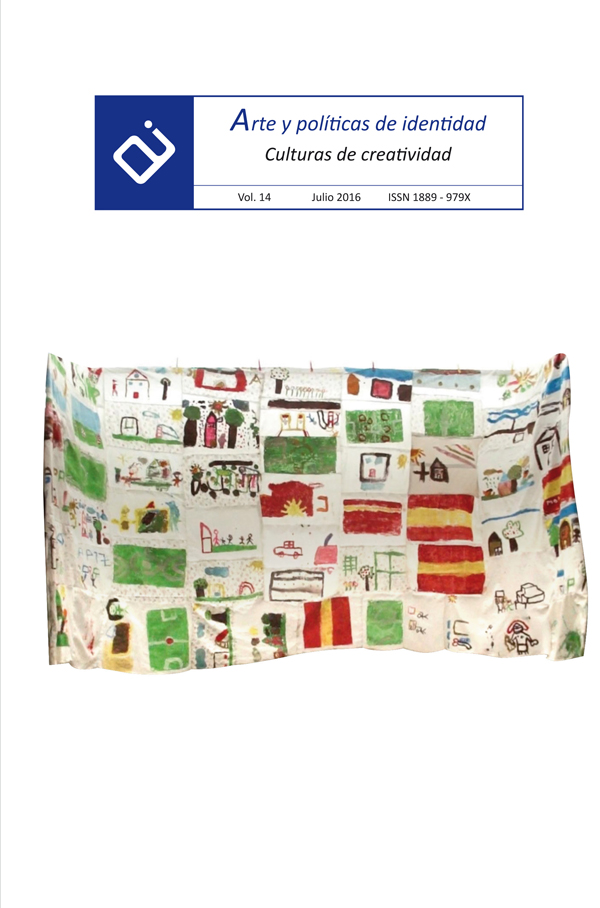Performance of Teaching
an Holistic, Identity Related and Generational Approach
Abstract
After studying the role of the ICT in Education (Legarda) and the Visual Culture in the identity of the teachers (De Juan), this article approaches both issues from a holistic, identity related and generational perspective. From the theoretical review, the new educational context is analyzed, the Web Society, focusing on the Digital Gap and the potential of the ICT to deal with the challenges of the 21st century, where the School as an institution will change. The analysis deepens in the visual characteristics of the technology and in it’s effect on the identity formation in the Visual Culture Society.
Downloads
-
Abstract722
-
PDF (Español (España))439
References
Abad, J. (2013). Imagen-palabra: texto visual o imagen textual. Actas del Congreso Iberoamericano de las Lenguas en la Educación: las lenguas en la educación, cine, literatura, redes y nuevas tecnologías (pp. 97-104). Secretaría General Técnica.
Banks, M. (2010). Los datos visuales en Investigación Cualitativa. Madrid: Morata.
Castells, M. (2000). La era de la información (Vol. 1): economía, sociedad y cultura. La sociedad red. Madrid: Alianza.
Correa, J.M. y Aberasturi, E. (2014). Repensar el género en la construcción de la identidad docente en la educación infantil. En L. Puche y L. Alamillo (Eds.),Educación y Género: la incorporación de la desigualdad en múltiples contextos de socialización (pp. 43-48). Madrid: Traficantes de sueños.
Dussel, I. (2010). Educación y nuevas tecnologías: los desafíos pedagógicos ante el mundo digital. Buenos Aires: Fundación Santillana.
Eco, U. (1964). Apocalípticos e integrados. Barcelona: Lumen.Fernández, P. (2015, 23 de abril). Educar las emociones disminuye la violencia en las aulas, Diario de Navarra.
Freire, P. (1973). Education for Critical Consciousness. New York: Continuum International Publishing.
Giménez, G. (2005). La cultura como identidad y la identidad como cultura. México: Consejo Nacional de la Cultura y las Artes.
Hernández Hernández, F. (2008). La investigación basada en las artes. Propuestas para repensar la investigación en educación.Educatio Siglo XXI,26, 85-118.
O Donoghe, D. (2008). “That stayed with me until I was an adult” making Visible the Experience of Men who Teach. En S. Springgay, R. L. Irwin, C. Leggo y P. Gouzouasis (Eds). Being with A/r/ tography (pp. 109-124). Rotterdam: Sense Publisher.
Paredes, J. (2011). Cambiar el panorama de las escuelas.Indagación narrativa, artes visuales y TIC en una escuela activa radical. En Antropología visual e investigación sobre tecnología educativa (pp. 152-176). Madrid: Trotta.
Prensky, M. (2001). Nativos Digitales, Inmigrantes Digitales. On the Horizon, MCB University Press, 9 (5).
------- (2003, octubre). Theoretical and Practical Computer Applications in Entertainment. CIE Computers in Entertainment (CIE), 12 (3).
------- (2005). Computer games and learning: Digital Game-Based Learning. En J. Raessens y J. Goldstein (Eds.), Handbook of computer game studies (pp. 97-122). Cambridge, MA: MIT Press.
Sabbe, E. y Aelterman, A. (2007). Gender in teaching: a literature review. Teachers and Teaching: Theory and Practice,13 (5), 521-538.
Works published in this journal are subject to the following terms:
- The Service of Publications from the University of Murcia (publishing house) keeps the published works’ copyrights, and favors and allows the reuse of these works under the license indicated in point 2.
- Works are published in the journal’s online edition under the license Creative Commons Reconocimiento-NoComercial-SinObraDerivada 3.0 España(texto legal). They can be copied, used, disseminated, transmitted and publicly exhibited, as long as: i) the author and original source of publication are cited (journal, publishing house and work’s URL); ii) they are not used for commercial purposes; iii) the existence and specifications of this license are mentioned.
3. Conditions for auto-file. It is allowed and encouraged that authors share electronically their pre-print version (the pre-reviewed version) and /or post-print version (the reviewed and accepted version) of their Works before the publication, since it promotes its circulation and dissemination. RoMEO color: green.










